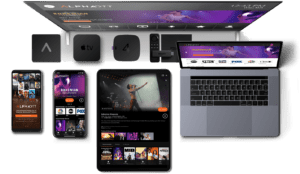VOD stands for Video on Demand. It is a modern time entertainment service. VOD allows consumers to access videos from a large online library whenever they want to watch them. As we all know movie theatres and TV channels provide you to watch their shows on a scheduled time but white label VOD services enable you to watch videos at your own time and you can watch them anywhere from your device easily.
There are mainly three types of VOD models you can adapt for your business:
1. Subscription Video on Demand (SVOD): SVOD can be said a video-on-demand service that allows users to access an entire library of videos and charge a small recurring fee. When the user pays these fees he can access the service and can watch as many videos as they want with the help of internet access from any device. This fee can be charged on a weekly, monthly or annual basis. Some popular examples of SVOD are Netflix, amazon prime, Hulu etc.
2. Transactional Video on Demand (TVOD): TVOD is a video on-demand service that allows you to buy content on a pay-per-view basis. It is the opposite of SVOD. In this, you are charged for per video or video package but in SVOD you get access to the entire library. Examples of TVOD is Google Play and iTunes.
3. Ad-Based Video on Demand (AVOD): AVOD is a video on-demand service that is based on adds. It is free to its consumers but it generates its revenue from ads. In AVOD, the ad revenue is used to offset production and hosting costs. AVOD receives less amount of income than SVOD and TVOD. Examples of AVOD are Youtube and 4OD.
Of the above all models SVOD is the most popular and commonly used model as it generates more income and gives the consumers a wide variety of videos to access at a low fee. Small online VOD owners are also using this model to grow their business and their audience every day. But your model depends upon the type of content you are providing to your audience.



